My Flow Through Bins
Hi all, I'd like to thank you for this forum. I barely found it and
because of this forum I was able to make myself some flow thru bins.
I've been worming for about a year now and visited worm digest and
gardenweb forums but haven't heard about the flow thru's till
recently. Finally got some god pics by wellsworms and decided to make
my own. He asked me to post pics so here they are! They're in the
photo section. I'm going to tell you how I made the bins because they
really are great and cheap to make.
Step 1: First of all you need your actual bin. My first one was made
from a 44 gallon trash can bought at home depot. It was around 35.00.
The 55 gallon drum I got from a friend that just gave to me. I used a
utility knife to cut the opening of the trashcan. It was pretty easy
and only required a few strokes. The 55 gallon drum however needed a
jigsaw with metal/plastic blade to cut the opening.
Step 2: I used threaded rods that were 3/8" thick and were zinc coated
to prevent rust. I don't think rust is a problem but my mom says she
heard that it was toxic in the garden so this is just precautionary. 6
foot rods are 5.00 each and you need 3 to 4 of them depending on what
size bin and how far apart you put the rods. I used a jigsaw with
metal blades to cut the rods to length. Drilled holes in the bin with
3/8" drill bit. Again used the drill to spin the rods through the
holes in the bin because it is a pretty tight fit.
Step 3: Put 6 layers of newspaper on top on rods inside of your bin to
hold castings, worms, and starter bedding. The paper will compost and
you can use a garden rake to scrap off castings when you need it.
Others have suggested 18" of castings from the rods to the top before
you start harvesting. I haven't harvested anything yet because I want
my bin to be almost full before I start harvesting.
Step 4: Add bedding and food scraps on the top and when the castings
is ready you can harvest!
A few words I have to say about this design. I've only had it for
about a month or so but so far I am loving it. I used to have worm
factories (2) but they just don't seem as efficient as these and I
hated harvesting because I had to seperate the worms from castings. My
hope with this design is that once the bins are pretty full that there
will be hardly any worms near the bottom of the bin. Hopefully
harvesting will be easier. Like I said I haven't had this long enough
yet so I can't comment on that. When I dig from inside the bin all the
way to the rods, the castings are pretty compact towards the bottom
and I don't have many worms down there. I think when the bin is full
there will be even less worms for a easier and faster harvest.
I have also noticed that the worms can take much more food than my
worms in the worm factories. I'm not sure why but the food disappears
pretty quickly. I might just have more worms in the new bins compared
to the worm factories. Whatever it is, the food is disappearing fast
and so is the bedding which prompted me to make the 2nd blue 55 gallon
bin. I'm going to try to sell my worm factories off to recoup the cost.
I do not add any water in the bins at all. It seems the open bottom
and closed top give perfect moisture level. There is a lot of water on
the lid when I open it but the worms seem to be thriving so I'm not
adding more paper.
Hope this helps people that want to try a flow thru bin! Btw you can
find 55 gallon bins on craigslist and pennywiser for around 25 bucks.
Cheaper than the trash can I bought at home depot. Some of them have
lids that are removable too so you wouldn't need to cut anything.
Wow that was a long post but after watching American Idol I just felt
like I should "Give back" to the forum members and everything I've
learned.
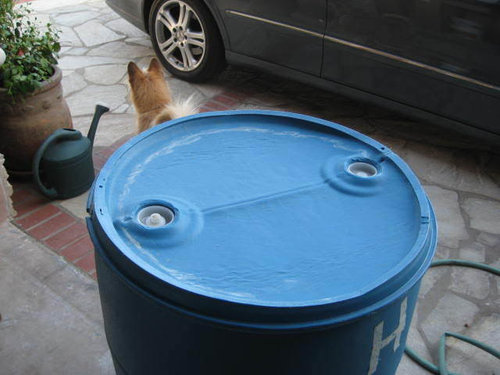




Comments (150)
mndtrp
15 years agolast modified: 9 years agoLess restriction should allow for greater air flow. Stackables, as far as I can tell, have a fixed amount of holes in each layer, piling compost in between. Flow throughs don't have the fixed amount of holes in each layer, allowing for a far greater amount of paths for air to travel.
As far as compaction at lower levels of the flow through, I'm not sure what effect it would have.
eric30
15 years agolast modified: 9 years agoI haven't owned a stackable bin either. I've harvested from my flow throw twice in the past 3 weeks that totaled less than 5 gallons of compost. I noticed that the bottom stuff I raked out was compacted from the weight above. It was just semi moist and was semi cemented together in clumps that I had to squeeze and crumble with my hands. After the first harvest, the rest of the pile was hung up above the grate. After the second harvest, the stack began to settle down unevenly. This created cracks or "faults" in the compacted compost above. With the open bottom, breathable cardboard lid, and cracks throughout the compost, I would have to say that there is a very good amount of airflow through the whole system. I think that another indication of this is the bin's tendency to dry even though I am adding wet food scraps to a plastic barrel. Yesterday I sprinkled 4 cups of leftover coffee in there.
Related Professionals
Towson Landscape Architects & Landscape Designers · Stamford Landscape Contractors · Peabody Landscape Contractors · Cockeysville Landscape Contractors · La Mirada Landscape Contractors · New Brighton Landscape Contractors · St. Louis Landscape Contractors · Casselberry Landscape Contractors · Dallas General Contractors · Decatur General Contractors · North Lauderdale General Contractors · North Lauderdale General Contractors · Pico Rivera General Contractors · Prichard General Contractors · Rotterdam General Contractorsmbetts
15 years agolast modified: 9 years agoHere is an update on my flow-through bin which I started last summer. (There are pictures of it posted above.)
Overall, I am very happy with it, although I must say it still does not make separating the worms from the compost a non-issue.
First of all, it took a while for the bin to really get going. I don't think I removed anything from the bottom until about November. I was a little surprised it took so long, because at the start I filled it about a third of the way up with the contents of the bottom tray of my stackable, which had a lot of worms, a lot of nearly-finished compost, and presumably a lot of eggs.
The first harvest I scraped with my scraper-thingy. The compost looked great, but there were still quite a few worms. I picked out many of them, and put the compost in a five-gallon pail to wait for spring.
I kept adding stuff to the top and pulling it out of the bottom. I added all sorts of vegetable waste, a lot of corrugated cardboard and shredded office paper, some chicken coop sweepings, and a goodly amount of cow manure.
Now that the snow has melted I was able to put TWO five gallon pails of vermicompost in the garden outside. I was very happy about that.
I did have to pick through it to get worms out, but oh well.
Lately, I find that stuff has been falling down into the bottom of the bin without my having to scrape it. It is very wet and mucky, and there are still a lot of worms to pick out.
Curious that mine is extra wet, and eric30's is only semi-moist. Must have something to do with the size of the bin. Or maybe all those rotten jack-o-lanterns I threw in last winter.
Anyway, I do like this bin. It seems to process the waste very quickly now that it is established, and it's nice not to have to hoist those trays and bins around.
I do still have to pick through the compost if I want to save the laggard worms, though.
mbettssusanfromhawaii
15 years agolast modified: 9 years agoI've harvested twice and haven't had any worms at all. I'll count myself lucky. I've got tons of them at higher levels. I garden on my balcony in containers and only harvest when I need some, so perhaps it's the quantity?
As to water level, I'll occ. add water if nothing has dripped through in a while. I only add enough to have a few drips when I come back later. I do have a piece of plastic loosely draped over the top that collects water that evaporates and drips it back into the system. eric30, do you have any sort of lid? That might be part of the difference.
I had some wet stuff oozing out of the bottom for the first month or two, but that's resolved itself as the bin has matured. (Lots of worms came out with the ooze, but that's stopped too.)
arkiegold
15 years agolast modified: 9 years agoHad to join just to say this is some excellent DIY wormin! Way to go!!
I'm surfin to brush up on what's new in vermicomposting and found this thread. Glad I did! Was thinking of some sort of flow-thru to vermicompost 2-3 cubic yards per week of dewatered sludge from our city wastewater facility. I really like your blue barrel design but I'm looking at needing several and a lot of worms for the amount of material...
Barrels I can get locally for $5 each. Plastic is good when dealing with my sort of food stuff and containing any possible leachate is a must.
As for the grate, I was thinking of a large version of something like a material classifier I make for gold prospecting. I would cut through the barrell at the height you have your rods and lay a piece of 1" x 2" stainless steel mesh wire between the barrel pieces and go around heating the wire with a propane torch. That should cause the wire to melt into the barrel pieces and fuse the two back together, making the mesh a permanent part of the structure, then grind off the outer excess, leaving a few tabs to bend down just in case. Very hard I would imagine to collapse a circle inward with even tension on all sides...
I may leave a portion of the lid intact like a few inch wide strip in the center to install something like a blade over the mesh with a handle that would extend up and through the center to turn like the old style brace and bit drill to dislodge castings. Hmmm. Probably too hard to turn but maybe not. If it was extended so that the bottom end went all the way to the bottom of the barrel and rested in a sort of cup to keep it centered...
Well just thoughts for now. I've kept worms for years. At one time I had well over a million in old refrigerators. Had them in piles and every sort of contraption imaginable, all DIY stuff so I love to see other's ideas and ingenuity. Yours is great! Flow-thru is the way to go.
mndtrp
15 years agolast modified: 9 years ago@arkiegold
Would windrows work better for your situation, or are you concerned with leakage into the ground?
If you have the room, I wonder if something with a much larger surface area, and not quite as deep, would work better. Something just a couple feet deep, but with several square feet of surface area would probably allow for faster processing.
eric30
15 years agolast modified: 9 years agoSusan,
My cover is breathable. After I sawed the lid off and started filling, the barrel warped slightly causing a mismatch. Because of insects I used a large piece of cardboard under the lid to stop the migrations. Insects can't get in but still very breathable. I've sprinkled 2 quarts of water in there after not paying attention to it for a few weeks at a time. Never had any leachate. With the plastic cover I can see how your bin is more moist.
Ericarkiegold
15 years agolast modified: 9 years agomndtrp, windrows would work if I had a place to contain any possible runnoff. I do have a place for a bin like you describe though and it's a thought bouncing around also. Thanks.
leearnold, BSFL have no interest in spent sewage sludge as I did try that last year. They do love fresh organics though and there is a portion of our facility that expells particles of undigested organics like corn and stuff that is separated from the rest of the soluable fecal matter before entering the treatment process. About 10 pounds of that is processed daily through a grit removal system and emptied into a dumpster where it is very foul smelling and produces maggots from all the flies. This year I plan to purchase a commercial Bio-Pod after doing some testing with the BSFL on this material last year. Soon our facility will be zero landfill waste.
I like the idea of these blue barrels mainly because of cost, portability and containment for now. I have to prove to the powers that be of a viable working system with the worms before I can get financial assistance for bigger and better if you know what I mean. Right now it's considered a pilot project financed out of my pocket, working with small amounts so I see at least a few barrels coming along real soon...
But the first thing is to determine if the worms will eat this material. For the sake of records I purchased a pound of Eisenia Fetida from Trinity Worm Ranch in Missouri and have made a temporary bin out of a couple of five gallon buckets. The dewatered sludge in question contains a polymer through the dewatering process and I'm not sure it's going to be palatable and might even kill the worms though it is considered non toxic to humans. If the pound eats, lives and multiplies, then I will expand to as many barrels as is feasable and from there look on to building a larger shallow bin that can be loaded with a tractor and have if not an automated scraper, then one with something that can be done also with the tractor like maybe a push/pull something or other...
folly_grows
15 years agolast modified: 9 years agoArkie,
Check out the Worm Guy on Vashon Island, WA. His Youtube video may give you some additional ideas for your large scale project.Here is a link that might be useful: Worm Guy video
rosegone
15 years agolast modified: 9 years agofolly_grow: I follow your advice and got a 55-gallon barrel from a car-wash, ALL FREE!!! Thanks!
splitsec002 and eric30: The barrel you got seems quite thick; what tool do you use to saw through the lid and the hole in the bottom? And instead of saw through the whole lid, would you say leave 1/3 of the lid on can preserve more moisture? And would that pose a operation difficulty?
Q: the barrel I got is opaque white (light can go through), do you think I should spray paint it to solid black/brown/green? Personally I thought after all that bedding/scrap put in, there should be very little difference when comes to light. But I'd still like to make it as comfortable as possible for my wormy. What do you think?
eric30
15 years agolast modified: 9 years agoRose - you got me thinking now. Maybe just half of the lid can be cut off and fitted with a hinge? Don't get me wrong, I don't have any issues with keeping moisture in, just saying that the bin will slowly lose moisture over a long period of time even with regular feeding. I would consider this optimal, no worries about it being too wet and I know there is plenty of air in there. The only issue is this clunky lid that doesn't really fit, and I have to find a place to set it down every time I take it off.
Anyway, for the lid I used a 36" bow saw as if I was cutting a giant log. It is what I had handy at the time and it made a nice straight cut. For the bottom door I borrowed my neighbor's jigsaw. First I had to trace out the shape of the door and drill a hole to get the blade started. I also used the bow saw to begin the top and bottom cuts because it worked so slick on the lid. For the holes I used a 3/4" flat wood bit and measured the spacing with a garden fork. For the bars, a hacksaw. The plastic is actually pretty soft and cuts very easily when you put carbide blades and bits to it.
I wouldn't mess with paint, they should be just fine in the opaque barrel. With any bin don't put it in the sun.
rosegone
15 years agolast modified: 9 years agoEric, thank you for your advice. Adding a hinge is exactly what I have in mind.
As far as the tool used to cut it open, besides bow saw, jigsaw, what other thing will you recommend? I'm 5 feet and 110 lb, bow saw isn't exact an ideal tool for me to operate.
For the bottom door, you seems to leave a few inches from the ground. Does it serve as a compartment to store compost that scrape down from the crate? I was thinking to cut all the way down to the ground, so I can slide a tray in, however, doing so, I'll have no room for a garden fork to reach in. Any solution?mbetts
15 years agolast modified: 9 years agoRose, a bow saw is pretty light, and should be easy enough for you to handle. I used a jigsaw myself, because it didn't occur to me to use a bow saw. I think a bow saw would be good for the horizontal cuts because it is fast and cuts straight. You'll have to use something else (the jigsaw) for the vertical cuts. It's good to have someone helping you to help hang on to the big round barrel because it's going to try to roll away while you are trying to saw it.
As far as I can tell, you'll definitely need to have an opening at the bottom large enough to get your hand in. I think the tray idea has appeal, but still the barrel is round and the tray is not, so there is going to be some stuff that is going to fall outside of where a tray would be. You need to be able to reach in there and pull stuff out.
Also, for me it is good to have a "lip" at the bottom to keep any compost that falls down from above from falling out onto the floor. There can also be some liquid falling down too, which you don't want on the floor. I think the lip also gives some structural support to the barrel.
How big is the barrel you are going to be using? If it is a 40 or 55 gallon you'll have plenty of space for compost even if you leave the opening at the bottom. Mine is only 17 gallons, but there is still a fair amount of room for the worms to do their thing, and the weight of all of that stuff is significant. I think it is possible that the weight of what is in the barrel can cause the stuff on the bottom to compact.
mbettseric30
15 years agolast modified: 9 years agoThe bow saw was the easiest thing I could think of for doing it at home. Yes, very straight cuts if the barrel doesn't get away from you. When in doubt I would have someone else do it. I was thinking the same thing with the door being up to contain compost that came down. I use it for storage if some falls down and I'm not ready to use it. Use a little water to keep it moist. I have to lay down on the floor to reach because my bin isn't elevated, but it sure beats dumping and sorting every 3 or 4 months.
steamyb
15 years agolast modified: 9 years agoIt seems the door at the bottom actually weakens the structural integrity of the barrel and the rods (or pipes or rebar, etc.) weaken the barrel as well. Why not make a steel table or stand (26X26X8) out of 2" angle iron with bars for a top spaced at 3" and sit the barrel on it with both ends cut out. You could use a concrete mixing tub from Lowe's(20X26X6) to catch the VC in. Just shake the drum and let the stuff drop on down past the bars and into the tub. Just an idea, cause all this other stuff seems so complicated.
eric30
15 years agolast modified: 9 years agoHi Steam,
That seems like a pretty good idea you have. You're saying to cut the bottom out of the barrel and set it on an elevated grate with a tub underneath? I could see that working great.Believe me though, the barrel is plenty strong. I could fill it full of wet sand today and it wouldn't move. I considered this most of all when drilling the holes; I wanted to put them far enough above the bottom door so the bars wouldn't tear through. The bottom door is large enough to look around and do your business but not large enough to allow the barrel to buckle. It was easy to fabricate except the bar spacing was a bit tricky.
I copied the design from others on this post, mainly splitsec and mbetts; and took their advice before building mine. The only thing I would do different is change the clumsy lid; maybe make it a half lid with a hinge. Anyway, if you already have the tools and can get the barrel for free, the total cost of the electrical conduit is $6. I paid $10 for the barrel. Another advantage is that its mobile. You can pick it up with a dolly and wheel it to a different location if you want.
steamyb
15 years agolast modified: 9 years agoHi eric30. You got the general idea, I want to keep this simple. And I talked it over with the guys at work (experts at most everything) and simplified the project even further. Here's where I'm at with this. I took a 15 gallon steel drum and drilled 4 holes in the bottom. Hole size = 4 1/2 ". This drum is 15" across and 27" high and will serve as a prototype of the full size (55 gallon drum) model. This 15 gallon drum will sit in the Lowe's tub (20X26X6) on a couple of bricks. Once the system is cranked up, it should be easy to harvest (just rock the drum and the poop will fall out). I will start the drum with 2 lbs. of red wigglers. I'm thinking the output of this 15 gallon barrel will compare to the output of my 18 gallon Rubbermaid totes, but without the hassle of sorting castings and losing cocoons.
eric30
15 years agolast modified: 9 years agoThere's an idea. Maybe lay some cardboard on top of the holes to hold material back until you're ready. Even with the large holes I could see you needing some sort of digging tool. The compost will become compacted under its own weight and hold itself together like a large clad of dirt. This is sure worth a try, do keep us posted!
fzilz
15 years agolast modified: 9 years agoThis forum is great and has my mind racing. I want to start a flow through. I already commandeered a couple large plastic drums from my warehouse (we make raw materials for nutritional supplements). My question - Outdoor vermicomposting? I currently have a small cool compost pile, it is teaming with red worms. I was thinking of layering this partialy digested compost in with layers of bedding (on top of a grate, and layers of wet newspaper. followed by my daily layers of vegetables scraps from the house.
I am in CA (between sacramento and San Francisco) my summers will get well above 100 degrees. will this temperature cook the worms? Definately planned on having the drum in the shade.
steamyb
15 years agolast modified: 9 years agoOne thing I am still trying to figure out is why the pictures of the drums don't show any air holes in the sides. Is this the reason everyone is having a problem with overheating? These drums would overheat as long as there is newspaper blocking the bottom and the drums without air holes in the sides. Once the system is up and running, the paper would not be in the bottom and the drum could draw some air up thru the bottom. Not much cause the poop is gonna block most of it off. Side holes seem to be necessary for these drums, right?
Does anyone have a drum with working worms or are all the drums "hot"? By hot I mean killing worms and composting the old 6 to 9 month, slow rot with heat method.
I would like to see a picture of a real flow-thru drum with worms that was up and running, and not a "new" build.mndtrp
15 years agolast modified: 9 years agoI don't have any holes in my bin, other than the large one at the bottom, and the small ones in the lid. Even from the beginning, with newspaper over the bars, I had very small instances of overheating. The overheating was caused by me adding in a massive amount of yard waste, coffee and shredded paper. I didn't have a compost bin set up yet for that stuff, so I basically did it in the worm bin by accident. My worms survived, and I moderated what I put in the bin from then on.
Side holes are not necessary for these bins. I've been using mine for about a year with the above mentioned holes, and it works swimmingly. It's true that the vermipost compacts on the bars, limiting the air somewhat. For that matter, my vermipost doesn't even push itself down to the bars under it's own weight.
To solve both problems, I insert an unused broom handle into the bin, and move it around a bit. I do this in a couple of places, which breaks up the vermipost, allowing it to drop down to the bars, as well as get more air movement.
I think I'm going to try to keep my bin no more than 2/3 full at any time. As far as pictures of an up and running bin, imagine the last picture in the first post almost completely full of poop. I'm not sure what you are hoping to determine from a picture of a trash can with waste a few inches from the top.
eric30
15 years agolast modified: 9 years agoSteam,
I put more pictures on the below thread. There is one in there of the bottom after the first harvest.The heat was an initial problem because I added too much food and bedding. The worms evacuated the center of the bin until it cooled down; then they went back in.
Like mndtrp said, no extra holes needed. There is plenty of air flowing through the system.
Here is a link that might be useful: Flow Through Bin
fzilz
15 years agolast modified: 9 years agoOk, I did it, I took a 55 gal drum, I decided to cut a hole in the bottom, as this unit will be outside, and the drum has nice handles on the side for lifting and or rocking the drum from side to side. I am using 1" pvc for the grill at the bottom, but I left them stick out 2" on each side for 2 reasons, one as the pvc bows, they wont pull out and 2 I want to see if by pulling the pipe back and forth, I can harvest compost. If the pvc starts to bow, i will insert metal rods inside the PVC.
I am concerned about air flow. At the moment, I have a large hole in the bottom, but this will be resting on the ground (unless I but the unit up on blocks), and the holes that the pvc goes through which are maybe a 1/8 to 1/4 larger than the pvc.
Question, should I drill holes in the lid and or just under the lid in the side of the barrel, or not necessary? During the summer I get no rain, but all winter it is nothing but rain, so I did not want to cut a hole in the lid and attach screen , but also don't want it to be too easy for flies to get in and out. Look forward to your suggestions. I will try to take pictures and post them here. I got into a zone, once I started making it and did not stop until I had my bedding in and a layer of compost swarming with red worms. Then I realized, I had not taken any pictures. :-)
steamyb
15 years agolast modified: 9 years agoOK, so it seems that everyone has had a problem with heat at some point, and everyone says it was because they overloaded the system. Is it possible to design a worm barrel that humans can't overload? Would heat be reduced by holes in the sides of these drums or not? How can some claim they don't need side holes and yet say in the same post that the drum is a dead air space?
mndtrp
15 years agolast modified: 9 years agoCompost piles heat up, and those are exposed to complete air on all sides (except the bottom). You most certainly could build a bin that humans couldn't overload, it would just be smaller than a 55 gallon barrel. Or a 35 gallon barrel, in my case. The problem was simply because we created a compost bin inside a worm bin. It has nothing to do with the amount of air holes in the bin.
I also don't see where we stated there is dead air space, which I'm not even sure what that is. How many more times would you like us to explain that extra holes in the side of the bin aren't necessary? The fact that we've been doing this for over a year like this seems to imply that it works just fine.
As for fzilz, I would put the bin on blocks and drill holes around the top. However, having an open bottom into the ground would be sufficient for any sort of runoff, and holes full of worms process waste just fine. If you are looking to just lift the barrel and dump what's in it in that location, just leave it on the ground. If you want to harvest it like the rest of us flow-throughs are, you'll probably want to put it up on something.Since you are concerned about the rain, I probably wouldn't put very many holes in the lid, just on the side at the top. I also wouldn't bother with the screen. I tried it on my bin, and flies still made it in. It doesn't really matter, as they don't have much of a detrimental effect on the process.
coffeenut
15 years agolast modified: 9 years agoRecent lurker and 1st time poster. So glad that I found this forum and this thread.
I have a dumb question -
If I have a 55 gallon drum designed according to this thread, can it handle some morning sun, do you think that the heat will kill the worms in this time window? The spot that I have in mind for the drum is shaded most of the day except for few morning hours. Since it is so big, do you think that it might take a while to heat up by the sun?? Yikes, I know, it's a dumb question. Just hoping....
mndtrp
15 years agolast modified: 9 years agocoffeenut:
This is a guess, but I would imagine they will be ok. Where are you located, and what are your temps during that time frame? If it's only 50 degrees outside, then they should be fine. If it's 95 during that time, then they might get too hot.
I have a 35 gallon bin that I keep in my garage. During the hottest weeks, the temp outside is around 95-100 degrees. I don't know what the temp in the garage is, but it must be comparable. I put frozen water bottles in the bin around noon, taking them out when I got off work at midnight during these weeks. I don't know if they were necessary, but I didn't see any dropoff of population.
coffeenut
15 years agolast modified: 9 years agoThanks mndtrp for the response. I have a garage but it is full of stuff. Maybe a garage sale is in order.
I am in San Jose, California. If we have heat wave in the summer, then it gets above 100 degrees. Mid 80's to low
90's in the summer is pretty common.organic.sugamama
15 years agolast modified: 9 years agoCan the worm tea be used to fertilizer say tomato plants or other vegetables in the garden?
steamyb
15 years agolast modified: 9 years agomndtrp Thanks for explaining again that I don't need holes in the side of my barrel and how you've done this for a year and it works great.
So tell me how many frozen water bottles I will need to stuff down into a garbage can on the really hot days.fzilz
15 years agolast modified: 9 years agomndtrp, thanks for the response. I do plan to harvest as the bin gets going, but will cross that bridge when I get there. I will place a few small holes on the side under the lid (as the lid seems to seal very well). I am seeing moisture on the sides and lid but nothing excessive and no dripping out of the bottom. Guess that is good. I did not see anybody wriggling on top last night, but when I went just below the surface they seemed to be wiggling with joy.
Placed a used coffee filter and grounds bucket at work to start collecting more coffee grounds.
And off topic, I emailed my local newspaper to be sure the ink and paper would be good for compostin - expecting them to say it was all soy based ink - not so. The color ink is soy based but appearantly the black ink is not. The ink manufacture sent me a letter saying there were no heavy metals of solvents in the ink. hmmmm.
mndtrp
15 years agolast modified: 9 years agoI only used one or two frozen bottles. If I had a compost thermometer, I would see what the middle of the barrel's temperature was during the heat of the day. If it wasn't over 80-85 on the inside, I wouldn't bother with the bottles. I cold compost, so I don't own one.
Several consecutive 100 degree days sounds excessive, but I imagine the larger the bin, the better it will weather heat and cold. Try it, who knows? What works for one person may not for another, and vice-versa.
I've never been concerned with moisture on the lid or sides of my barrel. If there is an excess, it will disburse through the rest of the compost. If there is still too much, which is rare, it will drop through to the bottom of the barrel.
As always, everything in moderation. Be careful with the amount of grounds you'll get from work. I did a good job of giving my worms too much, and the bin started smelling like ammonia. Being as large as a flow through is, they weathered it quite well, but I was still worried. Now, I only give them work grounds every other week or so, and the rest goes into the compost bin.
fzilz
15 years agolast modified: 9 years agoYes, I plan to use the grounds some for my Vermi-bin and some for my compost pile or straight as a top dressing for flower beds.
but...
I have already had a 90 + degree day and the lid of the bin which is black was very hot, Inside it felt warm - my guess 80 +. I think I am going to paint or cover my lid so that it is not black. The drum itself is blue. I am thinking of painting it white as that might help reflect heat. But in the end, this summer it will be 100+ so my guess is that no matter what i do the bin is going to cook , shade no shade, . I was hoping to get a couple months of vermicomposting then go to composting for the summer and start back in the fall, (can worms be kept "on ice" for a period of time - Can I keep a starter set in the refrigerator over the summer) ? Just looking for ideas.
mndtrp
15 years agolast modified: 9 years agoPainting the outside will help. Leaving the top off of the bin altogether, during the dry months, will help cool the bin. Drying out will be a concern at that point, but some water here and there would help. I would try not feeding, to avoid as much bacterial heat as possible, and putting some water in it occasionally.
Cocoons last over a winter, so they might last over a summer, even if the worms themselves don't. Worms are cheap. Try doing nothing different, and see what happens. If they all die, see if new ones come around when it cools down. If they don't, buy new worms and try something different.
sherryocala
14 years agolast modified: 9 years agoWell, this has been a very informative post that has taken me about 4 hours to read! All because I wanted to buy some worm tea online which lead me to worm bins which led to diy vermicomposting. And though I am almost ready to go barrel hunting, it appears that no one using a flow-through gets any liquid from it. The store-bought bins have spigots so they must all produce sufficient quantities of liquid that spigots are necessary to avoid a mess. But the flow-through doesn't, and tea is what I'm looking for. I know compost tea can be made simply by steeping compost in water for a few days. Does anyone know if that can be done with worm castings? Also, with all those worms and all that feeding, I'd think you'd have a lot more castings than anyone is reporting. Can anyone estimate the quantity of castings being produced from a mature flow-through?
I guess recycling is y'all's primary reason for vermicomposting, and as I told my DH, if I did this, I'd have to buy fresh vegetables just to put in the worm bin since I don't buy them for the two of us. (I got tired of throwing away expensive produce.) Though it's a wonderful economical diy idea, I'm wondering if this is worth the effort since it won't get me any worm tea to spray on my roses. It's a very worthy post though. Thanks everyone for sharing your knowledge and experience. And if someone has some thoughts on collecting liquid from a flow-through, I'd love to read them.
Sherry
coffeenut
14 years agolast modified: 9 years agoThanks for all the great info in this thread, I made my flow through bin after 1.5 month of vermicomposting. I moved a cup full of worms and cast into the new bin and waited a day to see if there was any ill effect, then move the rest of my worms from the rubbermaid into the new bin. I did not provide 10 inches of bedding, I only did approximately 5 inches, so far, after 4 days, the worms seem to be okay but am I putting my worms in danger by not providing a thicker bedding? My bin is outdoor, at 1st I thought it would get some morning sun, as it turns out, it does not get any direct sun at all.
After reading some of the postings, I find myself checking temperature at least a couple times a day. I used to put the worm food through a processor and freeze but now trying to just add food as they come. I am not sure if I have enough worms to process them all but so far, I have not seen heating issues. But I am worry about over feeding.
Another question is, should I drill tiny holes on the lid?? Right now, the lid is solid and the only air is from the bottom and when I open the bin.
TIA
mbetts
14 years agolast modified: 9 years agoSherry: Flow-through bins may leak some fluid, but it is not compost tea! Folks call it leachate, and it does not have the same benefit to the garden because it does not have the microbes. It can even be anaerobic. I throw it on the lawn when I have it. I can't say whether it helps, but at least it doesn't seem to hurt.
You CAN make excellent compost tea with worm castings. You would soak a bag of them in water, same as with other compost. From what I read, vermicompost is superior to other compost, and the tea you would get from it is better too.
Last year I started making aerated vermicompost tea and spraying it around. Again, from what I read, aerating it (using an old aquarium pump) causes the microbes you want to multiply exponentially. I can't say I've done the research, but I'm convinced. It's easy and fun to make the aerated VC, if you like that sort of thing, and I do!
I can't tell you how much VC you get from a flow-through, because obviously everybody's is different. Mine seems to work faster than the other types I have though.
And if you do decide to give worm composting a try, don't think that you necessarily have to have a ton of vegetables. You can use leaves, torn cardboard, old jack-o-lanterns, plate scrapings, spoiled stuff from the back of the fridge--just about anything organic. And even if you don't eat a ton of fresh produce, surely you have the occasional apple core or banana peel.
I'd also encourage you, if you decide to do this, to add some horse or cow manure. That will add the nitrogen that you would otherwise get from vegetable waste, adding nutrients to the finished product. I don't know where you live, but if there are any farms around (or ag schools) you should be able to find a place where you can fill your five-gallon pail up with manure for free. That much would keep the worms happy for a good while.
Good luck!
mbettsmndtrp
14 years agolast modified: 9 years agoLeachate is not compost tea, so you don't need the spigot. Flow through bins seem to handle their moisture better than other types, so there is rarely leachate.
Drill holes in your lid.
sherryocala
14 years agolast modified: 9 years agoThanks, mbetts, for answering my questions and being so helpful. I'll think on this some more. I'm in Ocala, FL - Horse Capitol of the World (or at least one of them.) I can get horse manure, but I read that's a no-no. Do you mean manure that has been allowed to cool for some time?
Sherry
mbetts
14 years agolast modified: 9 years agoAu contraire! Horse manure is NOT a no-no. The only problem might be if the horses had been de-wormed recently. No one that I know of has authoritatively said how long you have to wait until the worm medicine dissipates, but I have heard two weeks as an educated guess.
Aged manure is fine, but you can also use fresh as long as there is space in the bin for the worms to retreat in case it heats up.
I put a shovelful of fresh cow manure in my bin last summer, being careful to put it in only one section of the bin. The worms were immediately all over it!coffeenut
14 years agolast modified: 9 years agoThanks mndtrp. Will drill. Since it is an outdoor bin,
I need to figure out how to keep rain from going in during
rainy season.ledge
14 years agolast modified: 9 years agoAs far as the sides of barrel collapsing under weight using wire, cord or rope there is a way to solve that.
You use a small piece of PVC pipe maybe 1/2" or so and cut them to length to be installed. The PVC pipes are cheap and you can cut them with a hack saw or a band saw easy. Also they will not rust and last as long as the barrel.
Sample image below I will make PVC a "red color" for reference and black lines represents rope,wire or cord.
Tie the rope into a knot at the end first, if it is a wire then make a loop whatever it takes to STOP the rope from pulling through that first hole it will be going in to on the barrel.
So again pull that rope (cord or whatever) through the first hole of barrel into the barrel but now you thread it in and through your PVC pipe you have cut to proper size, go ahead and pull it through (push it with a clothes hanger wire if it bends) an as it pops out the other end of PVC then grab it and now you feed that out the other hole in the barrel, now completly through the barrel. Grab it and pull it tight and make a knot or secure it with a clamp like a snap tie. It won't come though because it has a knot on the other side right? And that PVC is ridged so it can not bend to easy so you end up with a stiff piece of "plastic" pipe inside instead of metal.
So hen you secure that rope or cord or wire on the outsides just make sure you pull it as tight as it needs to be and then secure the outside ends. If rope (cord,wire) is pulled tight then that PVC has no place to go see? So no collapse on side of barrel at that point. You do all of them that way and the barrel sides can not come in on you now because all those PVC pipes will not bend. Grab a piece of 1 or 2 foot PVC pipe in store sometime and bend it, this will give you idea on how stiff you think you might need it.
mndtrp
14 years agolast modified: 9 years agoWhile these bins are pretty heavy, I wouldn't worry about walls collapsing. The 55 gallon barrels have been completely full of liquids, traveled many miles in a bumping transport, and then pushed around with forklifts. They came out just fine. Granted, drilling holes will weaken the structural integrity of the barrels, but not as much as people seem to think.
My large trash can on wheels has a much thinner wall than the 55 gallon barrels. I used threaded rods to create the grate, and cut a fairly large hole in the bottom to reach through. At its fullest, the bin walls didn't budge in either direction. I was more concerned with the bottom hole causing the lower 5 inches to collapse on itself. It's still very strong.
My suggestion, build the bin with whatever you have laying around. If you have to buy something, buy whatever is cheapest, as long as the combined materials can support about 150 pounds. The biggest concern will be whether or not the grate can support the weight of the compost. PVC, rods, a grill grate all will. Wire, vinyl string, something like that, I would second guess as it can stretch.
susanfromhawaii
14 years agolast modified: 9 years agosherryocala, another food source for worms, in addition to what mbetts mentioned, is coffee grounds. They love them. Some people collect them from places like Starbucks, or at work so they can have more.
Also, now that I have worms I don't feel really bad if some of my veges spoil before I've been able to eat them all. If you eat melons, you get LOTS of food for the kids AND get to enjoy the melons.
Then there are neighbors and restaurants and .... Lots of food possibilities even if you don't create enough of your own! (Also, the worms will regulate their numbers. If there isn't as much food, they just won't reproduce as much but they'll be fine until you get more food.)
bpearcy10
14 years agolast modified: 9 years agoI live in Florida and want to make a bin like Eric's. I am worried abou the heat though. It's 88 degrees today. I have some shade, but not immense amounts of it.
What are your thoughts about using a PVC pipe through the middle of the bin that I could use to cool the bin? I could put ice in it. Or, would frozen water bottles work just as well (maybe even better)?
The issue is that I work during the hottest part of the day and I'm worried my ice might be ineffective.
I can keep in the garage which is fine at night, but it heats up a little around noon. It's still probably cooler than outside though. May a two liter bottle?
Has anyone else tried this? I don't want to freeze the worms. In the middle of the bin they still have plenty of room to avoid the ice if it TOO cold for a while.
mndtrp
14 years agolast modified: 9 years agoPut a frozen two liter bottle in a hole in the middle of the bin. It should last all day. I did this last year, except with smaller bottles.
coffeenut
14 years agolast modified: 9 years agoHi, sorry to bother you guys again. I now have my 55 gal flow through bin up and running for about 3 weeks now. The 1st couple of days, there was liquid dripped out the bottom but now the bottom is totally dry, I am worry the with the dryness the bottom bedding will never get processed. The inside seem wet/moist enough but the outside/bottom is dry to the touch. My bin is outdoor, should I add some water to the bin to a point that it wets the bottom layers again?? I have recent spotted a couple of pot worms. Is this an indication that the bin is too wet or acidic? I have about 10 inches of bedding and VC right now, if I add water, will I cause problem that I may not be expecting?? Is there something that I need to watch out for??
The next couple days, I will definitely add a little water to the system as we will be see heat wave here to over 90 degrees. I will probably also add a couple of frozen water bottle in the bin during the day.
Another question is that - the worms don't seem to be going down that deep, so how do will the lower layers get processed??
TIA
coffeenut
14 years agolast modified: 9 years agoHi, sorry to bother you guys again. I now have my 55 gal flow through bin up and running for about 3 weeks now. The 1st couple of days, there was liquid dripped out the bottom but now the bottom is totally dry, I am worry the with the dryness the bottom bedding will never get processed. The inside seem wet/moist enough but the outside/bottom is dry to the touch. My bin is outdoor, should I add some water to the bin to a point that it wets the bottom layers again?? I have recent spotted a couple of pot worms. Is this an indication that the bin is too wet or acidic? I have about 10 inches of bedding and VC right now, if I add water, will I cause problem that I may not be expecting?? Is there something that I need to watch out for??
The next couple days, I will definitely add a little water to the system as we will be see heat wave here to over 90 degrees. I will probably also add a couple of frozen water bottle in the bin during the day.
Another question is that - the worms don't seem to be going down that deep, so how do will the lower layers get processed??
TIA
Marcwouters
11 years agolast modified: 9 years agoHi, I did use exactly your design splitsec002, with the addition of a 3 watt led fitting in the top, I also cut the lid in half and put a hinge between the 2 halves, fastened one half to the bin.
the bin is in the shed, less temperature fluctuations and the light discourages wanderers.
put the bars a bit closer then your picture, used about 4 layers of newspaper and 1 inch of sharp granite sand for aiding digestion, about 3 inches of clean fresh peat from an Irish bog, some composted horsemanure and started feeding around 1000 worms.
2 months on an 4 inches higher, at this rate will be full around may.
I feed alternativly left and right in the bin every 7 days and give them around 500 gram of half composted kitchen waste, 14 days later totally gone.
thank you for your post, pictures could not be clearer, seems to be working like it says on the tin.
thanks
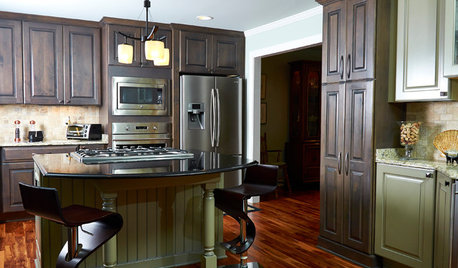
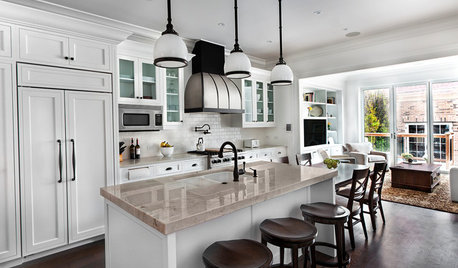

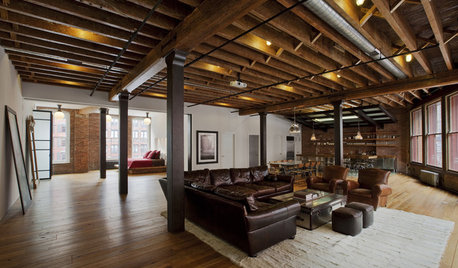

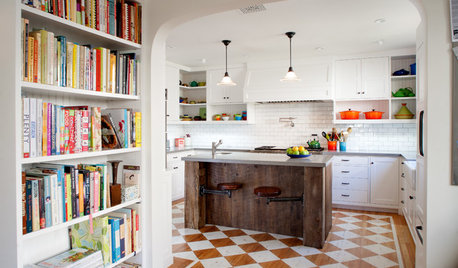











mbetts